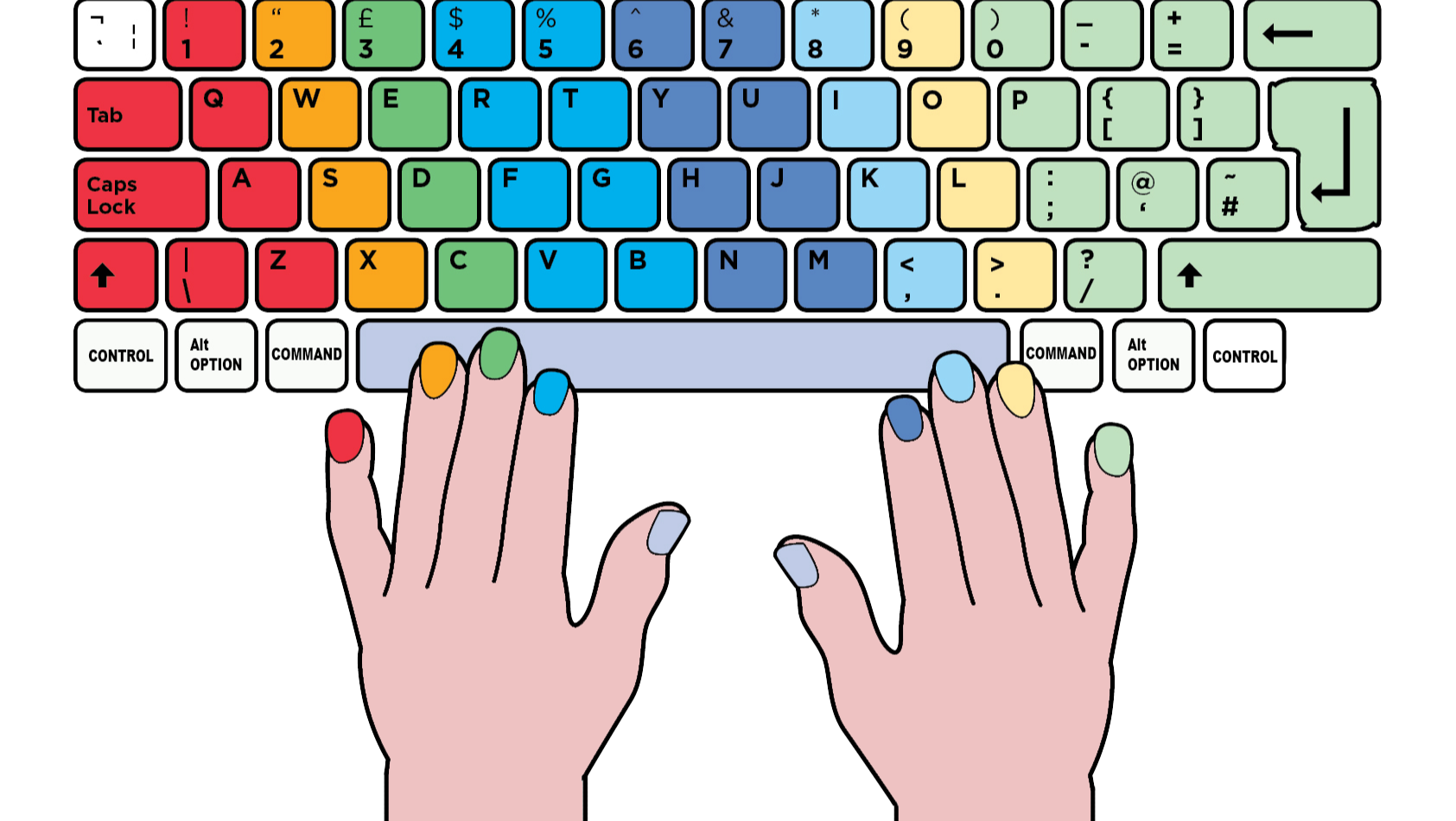

Fast typing fingers professional#
And professional typists’ speed (whoever they are) is usually around 90 WPM.
Fast typing fingers how to#
Personally, I’ve been learning how to type faster since I was 13 and these days I type with an average typing speed of 155 words per minute (WPM) while the average typing speed is around 45 WPM. Because of that, improving your typing speed is one of the most impactful things that you can do to level up your digital productivity.Īnd I genuinely believe that anyone can become twice as productive solely by learning how to type faster.


From entertainment to consuming content to working, we spend hours each day typing on keyboards in favour of pen and paper. These days we use computers for everything. And while I don’t want to admit it, I spend the majority of my time in front of my laptop writing blog posts, emails, and consuming content. You might have a different keyboard than the one described here.Let’s be honest - we’re all using computers on a daily basis and most of us use it for work. The most difficult to train will be the ring and little finger as they are the most underdeveloped.ģ. They work as a guide and are on the most common keyboards.Ģ. Feel the little bump or line on the F and J key so you don’t have to look to feel the starting position. While starting something out of curiosity it became a challenge and in the end something I wanted to share with others as well. Relating this to the 5 pillars of X-Honours, I noticed that it related very much to value-driven behavior as this experience tapped into my value for learning and improving, even if the skill might not be the most obvious. It is rather difficult, especially to use the pinky finger. After seeing no significant change and improvement anymore, I started learning the touch-typing method. The first time measuring I had a wpm of 50, the highest I achieved was 72wpm, but mostly I am in the 65wpm range now. This is because it slows them down in the beginning and, as they are no professional typists, there is no need to speed up their typing that much.Īs for me personally, I have started with measuring my typing speed on ‘monkeytype ‘mostly out of curiosity and a drive to become better at typing. This method will require time and effort to learn, and it is worth mentioning that some people won’t feel the need to learn this method. Take it slow and see it as a practice method and an investment in the long term. To start with, lay your fingers in the starting position and try to move them according to the guide. While typing the fingers always come back to this hometown and move from there.Īs the change of typing requires practice and cannot just be learned by theory, here is a visualization to show which finger types on which key (on a common QWERTY keyboard). On a standard QWERTY layout that is for the left hand: A, S, D, and F and for the right-hand J, K, L, and semicolon (or in my case on my german QWERTZ keyboard, the ‘ö’). There are some online tools as well to teach this, but some basics are the following: Touch Typingġ0 Finger Typing, or touch typing, is a method where you keep your hands in one starting position at all times and each finger has its designated keys to hit. This is a valid method, but not as efficient as another one: 10 Finger typing, or touch-typing. This means, while typing they rely on their intuition, or type while looking on the keyboard. Many people have taught themselves typing and have therefore mostly remembered the keys subconsciously. Speed typing refers to typing fast and can be practiced in multiple ways: Using an online practice tool, focusing more on typing correctly when working on a paper, or basically just trying to type faster – even though it should be mentioned that it also has to be typed correctly and therefore precision should be the very first step before trying to become faster.Īnother technique to becoming faster in typing requires changing the way of typing. Professional typists, for example, can type up to 80 wpm. Some professions may even require fast typing and efficiency. Still, with a lot of practice, some people have become even faster than that. The most common typing speed lays between 40 and 45 words per minute (wpm). Typing is something most of us grew up with and what you are better at when you don’t think about it too much. Surprisingly, for many people, this would be the first time actually thinking about this even though it is something nearly everybody has done at least once in their professional career. Are you one of the people that look on their keyboard, or desktop screen while typing? Are you good at typing blindly, or do you make many mistakes?


 0 kommentar(er)
0 kommentar(er)
